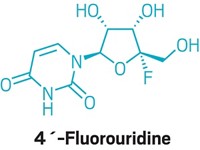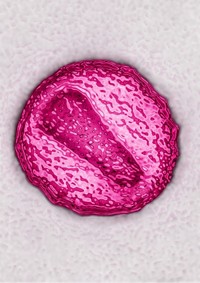Advertisement
Grab your lab coat. Let's get started
Welcome!
Welcome!
Create an account below to get 6 C&EN articles per month, receive newsletters and more - all free.
It seems this is your first time logging in online. Please enter the following information to continue.
As an ACS member you automatically get access to this site. All we need is few more details to create your reading experience.
Not you? Sign in with a different account.
Not you? Sign in with a different account.
ERROR 1
ERROR 1
ERROR 2
ERROR 2
ERROR 2
ERROR 2
ERROR 2
Password and Confirm password must match.
If you have an ACS member number, please enter it here so we can link this account to your membership. (optional)
ERROR 2
ACS values your privacy. By submitting your information, you are gaining access to C&EN and subscribing to our weekly newsletter. We use the information you provide to make your reading experience better, and we will never sell your data to third party members.
Biological Chemistry
A two-punch attack from CRISPR knocks out HIV in cells
The gene-editing technology mutates the virus’s DNA, blocking its replication in immune cells
by Ryan Cross
December 19, 2016
| A version of this story appeared in
Volume 94, Issue 49

When HIV infects a person, the virus integrates its DNA into the genomes of the person’s immune system cells. Daily doses of antiretroviral drugs suppress replication of that viral DNA, but it’s not a cure.
“An ideal situation would be a single treatment, rather than lifelong therapy,” says Atze T. Das of the University of Amsterdam. In a new study, Das and colleagues report progress on a possible one-time therapy. They permanently inactivated HIV in cultured human T cells using the CRISPR/Cas9 gene-editing system to damage its DNA (Cell Rep. 2016, DOI: 10.1016/j.celrep.2016.11.057).
The technique works by designing a CRISPR component called a guide RNA to direct the Cas9 enzyme to a specific spot in an HIV gene. At that site, Cas9 cuts the DNA, and a mutation is introduced when the cell repairs the break.
Earlier this year, the Amsterdam group and researchers from Chen Liang’s lab at McGill University separately showed that cutting HIV at just one site inhibits the virus initially, but eventually HIV finds a way to continue replicating. In the new study, Das and colleagues show that using a pair of two different guide RNAs instead of one completely inhibits the virus and prevents it from escaping the cells. “We could cure the cell of HIV,” Das says.
Liang says the results are an important confirmation that attacking HIV with CRISPR is a strategy worth pursuing. “I think we can improve it if we use three or four guide RNAs,” Liang says, suggesting that could make viral escape even more unlikely.




Join the conversation
Contact the reporter
Submit a Letter to the Editor for publication
Engage with us on Twitter